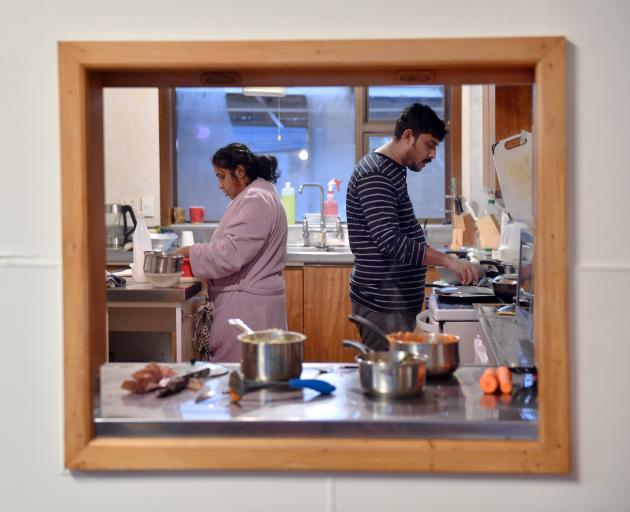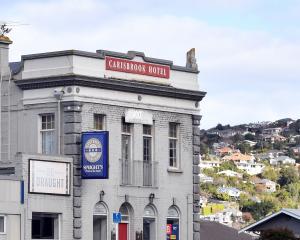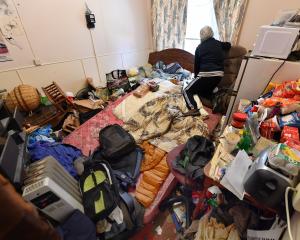
"Who is going to listen to us?" was a common question when the ODT approached Dunedin’s homeless people, most living in dilapidated boarding houses.
Homelessness isn’t just living on the streets. It means unsafe living conditions. Safety can be compromised by poor building standards, inability to self-care, and dangerous behaviours by other occupants.
During the ODT’s investigation of Dunedin’s homelessness, we witnessed, and heard about, all three.
A recent housing inquiry by New Zealand’s Human Rights Commission exposed a "sobering picture of a system that is failing to meet human rights standards".
The commission has called for an independent watchdog to address "systemic housing issues".
Most of the homeless people we talked to were unemployed and had permitted Work & Income — part of the Ministry of Social Development (MSD) — to pay their rent directly to their landlord.
In effect, it means the government is enabling continuation of appalling living conditions that other government departments and councils have not, so far, prevented, either through building standard regulation and enforcement or through support for people with mental illness, addictions or other social challenges.

But this "housing continuum" doesn’t happen. "In our experience of supporting vulnerable communities, housing progression or regression ... is circular."
At Dunedin’s Night Shelter, manager David McKenzie, agrees: "People rotate — they are fundamentally homeless."
Most homeless people we interviewed described having moved, or moving, between different, temporary, sub-standard options.
One woman the ODT spoke to, at a more top-end Dunedin boarding house, was evicted the next day, for drug use she denied.
We came across her smoking outside the Department of Corrections. She told us she was sleeping on a friend’s floor — and looking for another boarding house.
Auckland’s Independent Māori Statutory Board challenges us to think of housing as a social requirement, rather than a financial commodity.
The point is clear. What kind of a society are we, if some people are marginalised and not safely housed?

As one boarding house landlord put it to the ODT: "People have had a kick in the guts, and not been able to pick themselves up again. Their issues have become too overwhelming."
For some people, their own anti-social behaviours had resulted in criminal records or poor references, making renting a flat or house more difficult.
Many people we interviewed were 50 or older and had, eventually, found themselves living permanently in the same room, in an appalling building, for years — some for decades.
Others had developed their own, inadequate, routines for living on the street permanently, such as sleeping in a vehicle. Some of these older people were enduring increasing challenges, due to physical sickness and infirmity.
The safety of boarding houses — and their homeless occupants — was brought to public attention this year when the Wellington boarding house Loafers Lodge caught fire, killing five people.
A government investigation has now found more than 70 multi-storey buildings across New Zealand with fire risk. But that number is the thin end of the wedge. There are many more boarding houses, with many more risks to health and safety.
The boarding houses visited by the ODT in Dunedin ranged from a former grand hotel housing more than 20 tenants to houses with rooms for six tenants. Some houses comprised several buildings on the same plot.

In some boarding houses, significant fire hazards included plug-in heaters in bedrooms occupied by hoarders, surrounded by flammable rubbish.
Some buildings had rotting, broken or missing external cladding and window frames. Inside, we found some ceilings and walls sagging with black mould and holes, with evidence of leaking roofs.
Doors were frequently stained with thick dirt or damaged.
Floor coverings in communal areas included ancient carpets and lino ingrained with filth.
Security was a common complaint. Tenants talked about external doors that were left open or unlockable, and lost keys. People came in and out at will.
In some boarding houses, for some tenants — including elderly tenants in their 70s — there was no access to indoor bathroom facilities from their rooms.
One boarding house provided an outside toilet in a shed. In the worst boarding houses, showers often appeared dry and unused — an ominous sign of poor self-care by sick tenants, whose rooms frequently showed evidence of unsanitary conditions — such as stained mattresses and strong smells.
Communal kitchens in the worst boarding houses generally included an ancient cooker and a sink and looked like they were not in use.
To prevent food theft, tenants in boarding houses are generally provided with a fridge freezer, microwave and kettle for their room.
However, many rooms we visited were inappropriate for food preparation or consumption due to the inability of the occupant to clean and tidy.
There were stories of tenants not eating regularly — or requiring help from others to ensure they did eat.
At two boarding houses, the ODT observed significantly higher building and living standards, achieved through investment and better management, despite tenants with life challenges.
One building was a shining example of good practice — a small house with a sparkling kitchen, lockable food cupboards, new windows and TVs in all rooms. The tenants include people with vulnerabilities.
The landlord also has buildings in comparatively awful states. The contrast was shocking.
At the other higher-standard boarding house we visited, there were smart solutions to deal with predictable anti-social behaviour.
Lightbulbs had been replaced with LED lighting, preventing bulbs being stolen for conversion to pipes for smoking drugs, such as methamphetamine. Carpets were being replaced with tiles, so sections could be removed when soiled.
There were security cameras — and significant expenditure on cleaning. There was a large, clean, kitchen — well stocked with utensils — and a living room with a clean sofa and TV.

The manager preferred the building to be described as "shared accommodation". Residents’ stories were variable but included people not evidencing vulnerability.
Married health workers Jino James, 32, and Reshma Cheruvattakunnumal, 29, from Kerala, in southern India, were working in the health sector in Dunedin and hoping to get their New Zealand residency and bring their children over.
"This is a warm and supportive place," James said. "It gives us the opportunity to increase our English fluency."
Even here, however, significant damage was caused by some other tenants. The manager showed us pictures of smashed up rooms and windows.
The cost of repairs was in the thousands. The boarding house is for sale, advertised as a "genuine high cashflow investment opportunity".
Rents charged per room by boarding house landlords were typically around $250 a week — some higher, some lower — on flexible length tenancies with short notice periods.
Among tenants in low-standard boarding houses, there was palpable fear of eviction or rent hikes if they complained. Unexpectedly, however, there was also fondness expressed for landlords, including gratitude for help given, such as a car lift to the supermarket or hospital.
Some tenants described landlords as "friendly — just a little forgetful" or "well-meaning". One tenant, standing in a diabolical building, said: "He’s got a good heart, but sometimes he’s slow to work on things — it’s better here than it was."
A common name for boarding house landlords in the media is "slumlord" — but tenants had their own names, including "his majesty".
One ageing tenant, who had lived in his room for 30 years, and had no indoor access to a toilet, bathroom or kitchen, described his accommodation as "very good".
We spoke to some of the "slumlords" — and some of the people working for them. They were quick to talk about the challenges of housing vulnerable, sick people — and efforts they made to help and and clear up after them.
One building manager talked of a tenant who asked for a paracetamol, saying his ankle hurt. After taking a look, he took the man to hospital, where he stayed for more than two months. During that time, his room was repainted and his carpet, curtains and bed all replaced.
Landlords talked to the ODT about wanting to demolish the most dilapidated buildings — a more cost effective solution than renovation.
They queried, however, where the occupants would then go. They talked about money for renovation being eaten up by a constant need for rubbish disposal and repairs, due to tenant behaviours — describing this as a repetitive and hazardous task.
They provided photographic evidence of trashed rooms full of rubbish, pictures of light bulbs removed and turned into drug pipes.
They talked of mattresses and carpets frequently soiled with urine, faeces and blood. The filth attracted rats. One evicted tenant left bottles filled with urine.
Another left a bag of dirty drug needles, that broke, spraying them across the floor.

Landlords also complained about government "red tape" eating into their time, when they had entered the business to "help people".
They seemed to have varying understandings of, and compliance with, council and government rules, such as fire evacuation plans.
Landlords talked about their variable screening procedures. Typically, they wanted to prevent renting to troublemakers.
There was a range of approaches, including not taking convicts straight out of prison — because they "just want to party". One landlord limited their intake of women to one per building, because, in his experience, two women typically fought.
There was agreement among landlords that they were filling a gap in social care provision — in the absence of enough hospital beds for the mentally ill, programmes for addicts, or rehabilitation services for those newly freed from prison.
They agreed some people released into the community, either from hospital or prison, needed supervised, specialist care.
As one "slumlord" said to the ODT: "Our places are what they are ... but anyway, I’m getting out of it. I’ve had enough."










